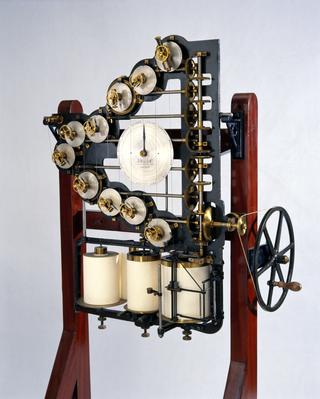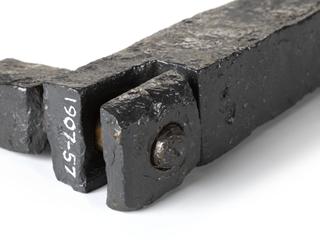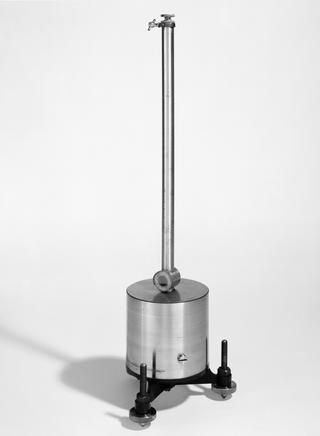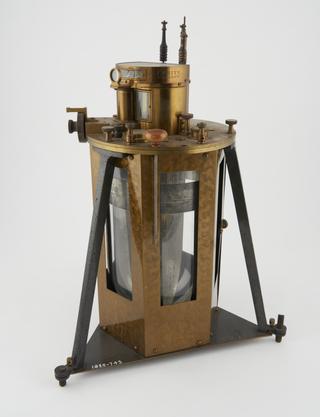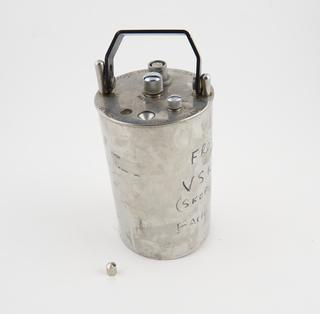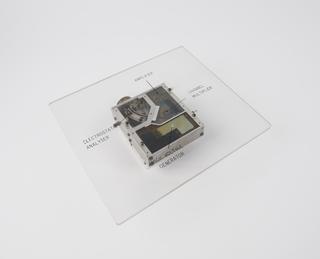Wiechert inverted pendulum seismograph, c. 1909
Main part of inverted pendulum seismograph designed by Emil Wiechert, made by Spindler & Hoyer in Gottingen, Germany, and installed at Eskdalemuir Observatory, Dumfriesshire, Scotland in 1909.
More
Emil Wiechert was professor of the geophysics institute at the University of Gottingen. He designed this seismograph, which was manufactured by local Gottingen firm Spindler & Hoyer, for the observation of distant earthquakes. The Meteorological Office installed this instrument at Eskdalemuir Observatory, which was under their administration. The seismograph was transferred to the Science Museum once Eskdalemuir’s seismological programme was transferred to Kew Observatory in 1925.
The instrument’s heavy (likely 80 kg) mass sat atop a pillar pivoted at its base, and held in position by a system of springs. Air pistons prevented the pendulum’s own resonance from interfering with the recorded motion, and its trace was inscribed on smoked paper, with friction between the stylus and the drum mitigated using a counterweight.
